
It was ‘another challenging day’ fighting Manitoba’s wildfires, officials say. In related news: Premier Eby to visit Asia; Georgia-Pacific to close operations this year; and low-interest loan programs hope to re-open sawmills. Meanwhile: Financial results for GreenFirst are announced; commercial construction statistics released; and Weyerhaeuser stays true to the message of its past.
In Forestry/Wood news: Public input for private land use sought on Vancouver Island; open house addressing recreation in West Bragg Creek; Oregon wildfire map could be repealed; and why some think significant logging won’t happen in the Tongass National Forest. Meanwhile: confidence in biomass exports from the UK; Michigan’s opens first mass timber building with local wood; and residents push back against proposed wood pellet plant in Nevada.
Lastly, would you cause a forest fire if you were a worm? The impacts of the spruce budworm in Montana.
Suzanne Hopkinson, Tree Frog News Editor

 The BCTS Review that was launched in January 2025, and co-chaired by Brian Frenkel, Lenny Joe and George Abbott, is nearing an end for public input intake. The BC government describes this initiative as a periodic review to ensure BCTS is evolving in an ever-changing marketplace while meeting its mandate commitments. The reality is that BCTS performance has been seriously impacted over the last few years. This review comes as the Premier seeks to meet his mandated target for a timber harvest of 45 million m3. Raising the BCTS harvest off its historic lows will help the Premier in his drive to 45!
The BCTS Review that was launched in January 2025, and co-chaired by Brian Frenkel, Lenny Joe and George Abbott, is nearing an end for public input intake. The BC government describes this initiative as a periodic review to ensure BCTS is evolving in an ever-changing marketplace while meeting its mandate commitments. The reality is that BCTS performance has been seriously impacted over the last few years. This review comes as the Premier seeks to meet his mandated target for a timber harvest of 45 million m3. Raising the BCTS harvest off its historic lows will help the Premier in his drive to 45!
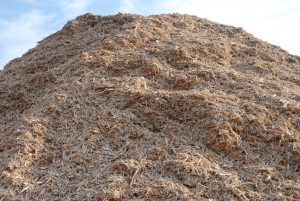 A German wood paneling maker plans to open a $250 million manufacturing plant in South Carolina’s rural Clarendon County. Homanit announced Wednesday it will build its first United States manufacturing facility on 140 acres near the small community of Alcolu — population 425. The company pledged to employ 300 people in the area located off Interstate 95, about 40 miles north of its intersection with I-26. “This investment marks a significant milestone for our company, and we’re proud to become part of such a vibrant and forward-looking region,” Homanit Managing Director Fritz Homann said in a statement. “The area’s skilled workforce, strategic location and strong infrastructure make Clarendon County the ideal foundation for our next phase of growth in North America.” The announcement marks the largest single investment in Clarendon County economic development history, according to Central SC Alliance President Jason Giulietti.
A German wood paneling maker plans to open a $250 million manufacturing plant in South Carolina’s rural Clarendon County. Homanit announced Wednesday it will build its first United States manufacturing facility on 140 acres near the small community of Alcolu — population 425. The company pledged to employ 300 people in the area located off Interstate 95, about 40 miles north of its intersection with I-26. “This investment marks a significant milestone for our company, and we’re proud to become part of such a vibrant and forward-looking region,” Homanit Managing Director Fritz Homann said in a statement. “The area’s skilled workforce, strategic location and strong infrastructure make Clarendon County the ideal foundation for our next phase of growth in North America.” The announcement marks the largest single investment in Clarendon County economic development history, according to Central SC Alliance President Jason Giulietti.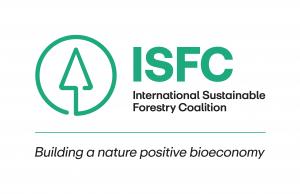
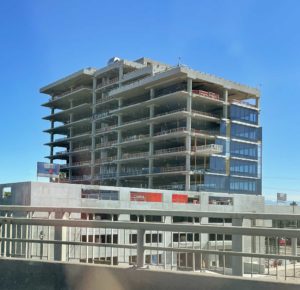 The new Cowichan District Hospital will be British Columbia’s first fossil fuel-free hospital, Island Health announced on Earth Day, April 22. The new hospital is under construction on Bell McKinnon Road near Duncan on Vancouver Island and is scheduled to open in 2027. It is also Canada’s first hospital to achieve Zero Carbon Building – Design certification from the Canada Green Building Council. “We’re building hospitals that will care for people in our communities for generations,” said Bowinn Ma, B.C.’s minister of Infrastructure. “This certification shows that through innovative design, we can create hospitals that support the well-being of families and a sustainable future.”.. The hospital’s leading-edge sustainability measures will free up resources for patient care while supporting patient and staff well-being and delivering environmental benefits.
The new Cowichan District Hospital will be British Columbia’s first fossil fuel-free hospital, Island Health announced on Earth Day, April 22. The new hospital is under construction on Bell McKinnon Road near Duncan on Vancouver Island and is scheduled to open in 2027. It is also Canada’s first hospital to achieve Zero Carbon Building – Design certification from the Canada Green Building Council. “We’re building hospitals that will care for people in our communities for generations,” said Bowinn Ma, B.C.’s minister of Infrastructure. “This certification shows that through innovative design, we can create hospitals that support the well-being of families and a sustainable future.”.. The hospital’s leading-edge sustainability measures will free up resources for patient care while supporting patient and staff well-being and delivering environmental benefits. The adage that one person’s waste is another’s treasure was proved true on Wednesday, May 21, when the province announced millions in investments in forestry biomass. Forestry biomass refers to forestry by-products that are not used in traditional wood-processing industries like sawing, veneering and pulp and paper. Examples include: crowns, branches, bark, sawdust, wood shavings, and wood chips. It is used in everything from food additives to building materials. It also has many emerging uses, including renewable natural gas, bioplastics and hydrogen, considered to be responsible alternatives to carbon-intensive products. The government says their aim is to protect workers and jobs in the forestry sector… The program has invested up to $20 million each year in projects to increase wood harvest, create forest sector opportunity and find new uses for wood in collaboration with stakeholders, industry and Indigenous communities. Find the press release
The adage that one person’s waste is another’s treasure was proved true on Wednesday, May 21, when the province announced millions in investments in forestry biomass. Forestry biomass refers to forestry by-products that are not used in traditional wood-processing industries like sawing, veneering and pulp and paper. Examples include: crowns, branches, bark, sawdust, wood shavings, and wood chips. It is used in everything from food additives to building materials. It also has many emerging uses, including renewable natural gas, bioplastics and hydrogen, considered to be responsible alternatives to carbon-intensive products. The government says their aim is to protect workers and jobs in the forestry sector… The program has invested up to $20 million each year in projects to increase wood harvest, create forest sector opportunity and find new uses for wood in collaboration with stakeholders, industry and Indigenous communities. Find the press release 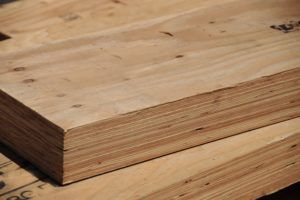 After this year’s fires burned through the Palisades and Altadena neighborhoods, destroying over 16,000 structures, the city is reckoning with 4.5 million tons of debris, according to LAist—”the largest municipal wildfire cleanup operation in recent history.” As a result, the Army Corps of Engineers is sending trucks to 18 different regional facilities including landfills and recycling plants to manage the process of clearing out build remnants and remediating hazardous materials. Trees that appear damaged or unviable are cut down and sent to a local golf course to be mulched—a fact that doesn’t sit right with local sawmill owner Jeff Perry. In the aftermath of the Palisades and Eaton Fires, Perry teamed up with local landscape architects to create Altadena Reciprocity, an initiative that helps homeowners recycle an often-overlooked resource—neighborhood trees—into a product that residents can use for flooring, stair treads, door casings, and much more.
After this year’s fires burned through the Palisades and Altadena neighborhoods, destroying over 16,000 structures, the city is reckoning with 4.5 million tons of debris, according to LAist—”the largest municipal wildfire cleanup operation in recent history.” As a result, the Army Corps of Engineers is sending trucks to 18 different regional facilities including landfills and recycling plants to manage the process of clearing out build remnants and remediating hazardous materials. Trees that appear damaged or unviable are cut down and sent to a local golf course to be mulched—a fact that doesn’t sit right with local sawmill owner Jeff Perry. In the aftermath of the Palisades and Eaton Fires, Perry teamed up with local landscape architects to create Altadena Reciprocity, an initiative that helps homeowners recycle an often-overlooked resource—neighborhood trees—into a product that residents can use for flooring, stair treads, door casings, and much more. 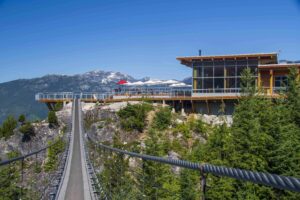 Material intelligence refers to how materials perform, adapt, and interact with ecological and cultural systems. It considers howstone, steel, or timber respond to intertangled forces, how those materials are sourced and assembled, and how they persist after demolition. Designers are centering material intelligence in constructing our cities in a generation of environmental uncertainty and strained supply chains. Few materials embody this shift as vividly as cross-laminated timber (CLT). By layering and bonding planks into structural panels, CLT offers strength, fire resistance, and a significantly lower carbon footprint than concrete or steel. Across Europe and Canada, mass timber has emerged as a centerpiece of decarbonized construction. Yet in the United States, progress has moved more slowly. Developers hesitate. Codes trail behind innovation. Conventional materials still dominate the urban skyline.
Material intelligence refers to how materials perform, adapt, and interact with ecological and cultural systems. It considers howstone, steel, or timber respond to intertangled forces, how those materials are sourced and assembled, and how they persist after demolition. Designers are centering material intelligence in constructing our cities in a generation of environmental uncertainty and strained supply chains. Few materials embody this shift as vividly as cross-laminated timber (CLT). By layering and bonding planks into structural panels, CLT offers strength, fire resistance, and a significantly lower carbon footprint than concrete or steel. Across Europe and Canada, mass timber has emerged as a centerpiece of decarbonized construction. Yet in the United States, progress has moved more slowly. Developers hesitate. Codes trail behind innovation. Conventional materials still dominate the urban skyline.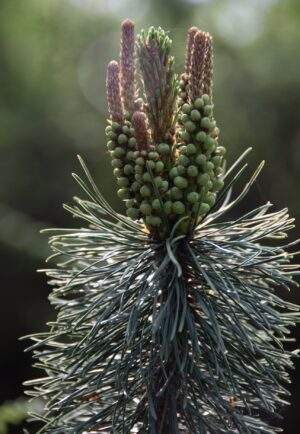 It doesn’t look like much from the grid road. Just an approach with deep tire ruts chewed into the summer Saskatchewan mud, tall jack pine and spruce trees clustered at its opening like a gateway. But if you walk past that first line of trees and down the narrow working trail, it fans out into a pocket of open space. Scattered there are stumps, piles of dirt and roughage, logs that are too small or too large stacked to the side — the aftermath of a logging sweep, both bare and messy. That pocket opens further into a clearing, a few hundred acres in size, that was logged the spring before. Grass now pokes through the churned-up dirt; grasshoppers chirp in the still July heat. Across the clearing, even if you can’t see it through the trees that dot the far side, is the northern town of Big River, Sask. It’s just a few hundred metres away.
It doesn’t look like much from the grid road. Just an approach with deep tire ruts chewed into the summer Saskatchewan mud, tall jack pine and spruce trees clustered at its opening like a gateway. But if you walk past that first line of trees and down the narrow working trail, it fans out into a pocket of open space. Scattered there are stumps, piles of dirt and roughage, logs that are too small or too large stacked to the side — the aftermath of a logging sweep, both bare and messy. That pocket opens further into a clearing, a few hundred acres in size, that was logged the spring before. Grass now pokes through the churned-up dirt; grasshoppers chirp in the still July heat. Across the clearing, even if you can’t see it through the trees that dot the far side, is the northern town of Big River, Sask. It’s just a few hundred metres away.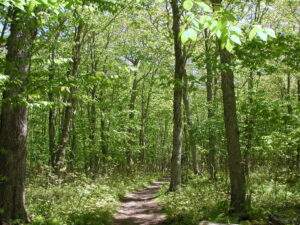 When outdoor enthusiasts Jeff Woodgate, Shaun Peter and Joey Reinhardt learned of West Fraser Timber Cochrane’s plans to harvest parts of their beloved forests near Moose Mountain and West Bragg Creek, they didn’t sit back. Fueled by a deep connection to the land and a sense of urgency, the trio founded Guardians of Recreational Outdoor Wilderness (GROW) and launched a petition to cancel the logging plans. Their message struck a chord. Today, more than 20,000 people have signed in support of preserving these cherished landscapes… After listening to public concerns, West Fraser reduced the scope of its plan by 37 per cent, now targeting 556 hectares — 268 in West Bragg Creek and 288 in Moose Mountain. According to West Fraser, the revised plan will now affect only five of 26 trails, with just 2.1 km directly impacted. Another 18.3 km of trail — about 17 per cent of the network — falls within 50 metres of harvest areas.
When outdoor enthusiasts Jeff Woodgate, Shaun Peter and Joey Reinhardt learned of West Fraser Timber Cochrane’s plans to harvest parts of their beloved forests near Moose Mountain and West Bragg Creek, they didn’t sit back. Fueled by a deep connection to the land and a sense of urgency, the trio founded Guardians of Recreational Outdoor Wilderness (GROW) and launched a petition to cancel the logging plans. Their message struck a chord. Today, more than 20,000 people have signed in support of preserving these cherished landscapes… After listening to public concerns, West Fraser reduced the scope of its plan by 37 per cent, now targeting 556 hectares — 268 in West Bragg Creek and 288 in Moose Mountain. According to West Fraser, the revised plan will now affect only five of 26 trails, with just 2.1 km directly impacted. Another 18.3 km of trail — about 17 per cent of the network — falls within 50 metres of harvest areas.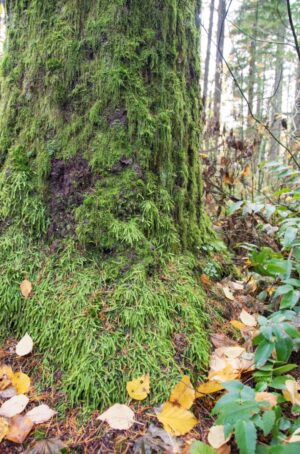 Improvements are coming to the Ancient Forest, one hour east of Prince George. The Enhancement Project is funded through the Investing in Canada Infrastructure Program – Community, Culture, and Recreation Program, with a total project cost of approximately $8.7 million. The Ancient Forest Provincial Park, known as Chun T’oh Whudujut in the Dakelh language, is one of the world’s few inland temperate rainforests, and was saved from logging in 2005… The project was originally funded in late 2019, and was expected to be finished by March of this year. However, it faced significant delays due to the COVID-19 pandemic in 2020, which disrupted planning and operations. This was followed by the tragic loss of both the Project Coordinator and Project Manager due to cancer, resulting in a loss of leadership and continuity.
Improvements are coming to the Ancient Forest, one hour east of Prince George. The Enhancement Project is funded through the Investing in Canada Infrastructure Program – Community, Culture, and Recreation Program, with a total project cost of approximately $8.7 million. The Ancient Forest Provincial Park, known as Chun T’oh Whudujut in the Dakelh language, is one of the world’s few inland temperate rainforests, and was saved from logging in 2005… The project was originally funded in late 2019, and was expected to be finished by March of this year. However, it faced significant delays due to the COVID-19 pandemic in 2020, which disrupted planning and operations. This was followed by the tragic loss of both the Project Coordinator and Project Manager due to cancer, resulting in a loss of leadership and continuity. With fire season arriving earlier and burning longer each year, Whistler is pushing forward with a suite of new wildfire risk mitigation measures—ranging from forest fuel-thinning and emergency planning to updated bylaws and collaborative research. At the heart of the work is a recognition wildfires are no longer rare events, but a growing threat made worse by climate change. “We are acutely aware that the wildfire risk is rising in Whistler and it’s the single biggest climate change related risk and vulnerability for all of us here,” said the Resort Municipality of Whistler’s (RMOW) manager of climate and environment Luisa Burhenne at the May 13 council meeting. The RMOW has treated more than 100 hectares of high-risk forest, representing about one-third of its 2030 target.
With fire season arriving earlier and burning longer each year, Whistler is pushing forward with a suite of new wildfire risk mitigation measures—ranging from forest fuel-thinning and emergency planning to updated bylaws and collaborative research. At the heart of the work is a recognition wildfires are no longer rare events, but a growing threat made worse by climate change. “We are acutely aware that the wildfire risk is rising in Whistler and it’s the single biggest climate change related risk and vulnerability for all of us here,” said the Resort Municipality of Whistler’s (RMOW) manager of climate and environment Luisa Burhenne at the May 13 council meeting. The RMOW has treated more than 100 hectares of high-risk forest, representing about one-third of its 2030 target.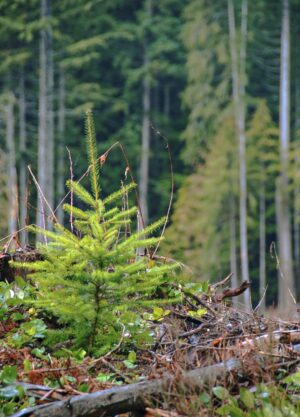 While the persistent, multi-year presence of a destructive pest known as spruce budworm has been noted by Alberta Forestry and Parks, an entomologist for the provincial government said the localized impact is not yet considered an epidemic. “We mapped some minor infestations that are on private land south of the Sundre area,” said Forest Health Specialist Caroline Whitehouse. “That kind of extends along that narrow band of spruce between the public forest and private land all the way west of Diamond Valley,” Whitehouse said. “And then it does peak into the Kananaskis forest area a little bit, but it’s really quite minor in that region”… Steve Bouchet, owner of Everblue Nursery who first established a plantation near Sundre in 1996, said he is less worried about his own tree farm where he can deploy mitigation strategies to attack the aggressive pest but harbours concern about damage trees in the greater area could suffer.
While the persistent, multi-year presence of a destructive pest known as spruce budworm has been noted by Alberta Forestry and Parks, an entomologist for the provincial government said the localized impact is not yet considered an epidemic. “We mapped some minor infestations that are on private land south of the Sundre area,” said Forest Health Specialist Caroline Whitehouse. “That kind of extends along that narrow band of spruce between the public forest and private land all the way west of Diamond Valley,” Whitehouse said. “And then it does peak into the Kananaskis forest area a little bit, but it’s really quite minor in that region”… Steve Bouchet, owner of Everblue Nursery who first established a plantation near Sundre in 1996, said he is less worried about his own tree farm where he can deploy mitigation strategies to attack the aggressive pest but harbours concern about damage trees in the greater area could suffer.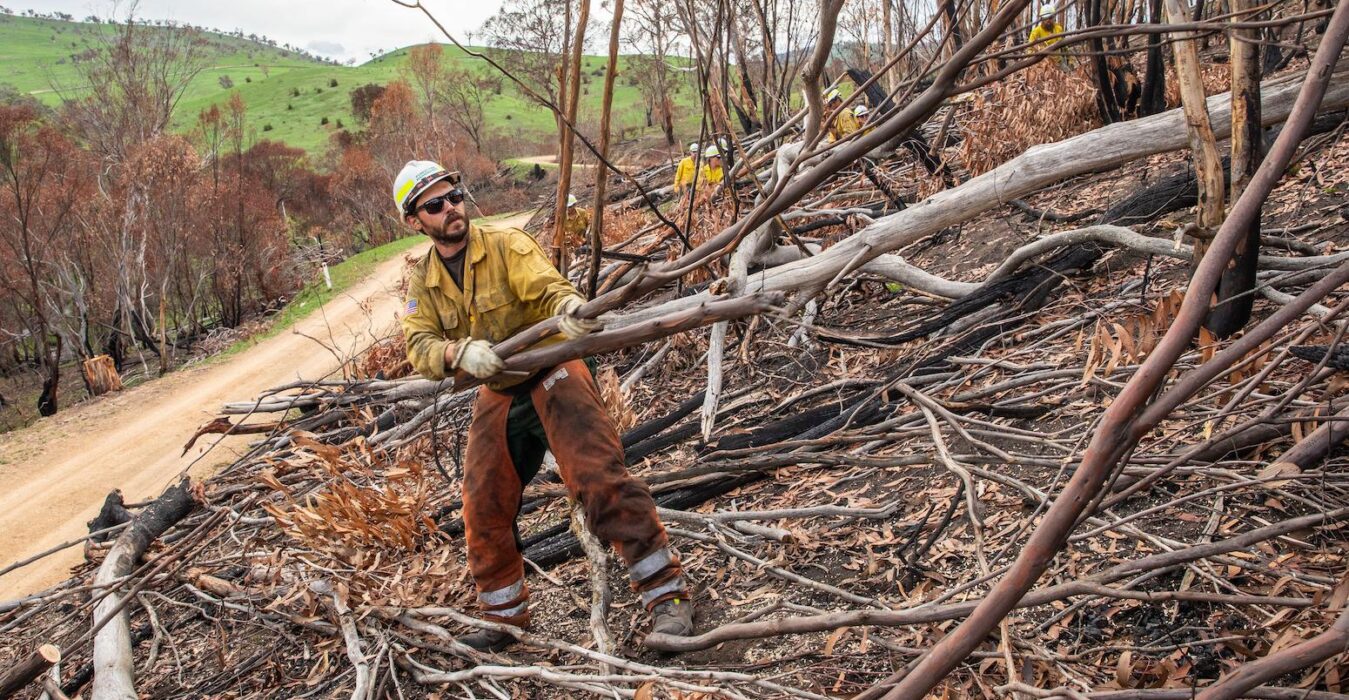

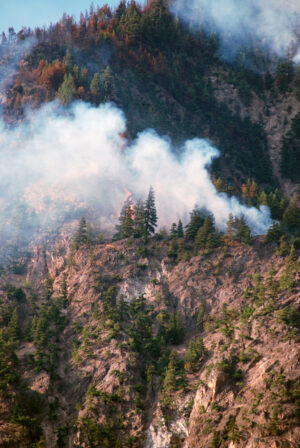 As the U.S. moves towards peak fire season, U.S. Secretary of Agriculture Brooke Rollins has signed a memo signaling the Department of Agriculture’s approach to wildfire response under the Trump administration. The memo – signed on Tuesday 20 May – directs the Forest Service to take several actions over the next 30 days, including policy changes for when the nation’s fire preparedness level is high. At Preparedness Level 3 and above, Rollins directed USFS Chief Tom Schultz to “prioritize and redeploy the non-fire workforce” to support wildfire response. A Preparedness Level 3 is issued when the potential for wildland fires is normal for the time of year, according to the National Interagency Fire Center, meaning it’s likely non-fire personnel will be deployed in 2025… The directive was made just months after the department was forced to hire back all 6,000 USDA workers the Trump administration fired on Feb. 13.
As the U.S. moves towards peak fire season, U.S. Secretary of Agriculture Brooke Rollins has signed a memo signaling the Department of Agriculture’s approach to wildfire response under the Trump administration. The memo – signed on Tuesday 20 May – directs the Forest Service to take several actions over the next 30 days, including policy changes for when the nation’s fire preparedness level is high. At Preparedness Level 3 and above, Rollins directed USFS Chief Tom Schultz to “prioritize and redeploy the non-fire workforce” to support wildfire response. A Preparedness Level 3 is issued when the potential for wildland fires is normal for the time of year, according to the National Interagency Fire Center, meaning it’s likely non-fire personnel will be deployed in 2025… The directive was made just months after the department was forced to hire back all 6,000 USDA workers the Trump administration fired on Feb. 13.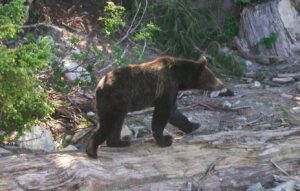 In a May 13 petition, members of Congress from Northern Rockies states once again admonished the U.S. Fish and Wildlife Service for what they say is a “flawed” and “ludicrous” proposal to continue listing the grizzly bear as an endangered species. “This decision punishes Montana, Wyoming, and Idaho’s successful grizzly bear recovery efforts,” states the petition, signed by U.S. Sens. Mike Crapo, R-Idaho, James Risch, R-Idaho, and U.S. Rep. Russ Fulcher, R-Idaho. “The FWS’s ‘Grizzly Bear Recovery Program 2023 Annual Report’ shows that our states have met and far exceeded the most recent set of recovery goals that FWS set for grizzly bears. All of this collaborative work is undermined by the FWS decision to yet again move the goalpost for delisting grizzly populations.” From Greater Yellowstone to the Selkirk Mountains of North Idaho, grizzly bear habitat protections have stalled the timber industry — a pillar of the region’s economy.
In a May 13 petition, members of Congress from Northern Rockies states once again admonished the U.S. Fish and Wildlife Service for what they say is a “flawed” and “ludicrous” proposal to continue listing the grizzly bear as an endangered species. “This decision punishes Montana, Wyoming, and Idaho’s successful grizzly bear recovery efforts,” states the petition, signed by U.S. Sens. Mike Crapo, R-Idaho, James Risch, R-Idaho, and U.S. Rep. Russ Fulcher, R-Idaho. “The FWS’s ‘Grizzly Bear Recovery Program 2023 Annual Report’ shows that our states have met and far exceeded the most recent set of recovery goals that FWS set for grizzly bears. All of this collaborative work is undermined by the FWS decision to yet again move the goalpost for delisting grizzly populations.” From Greater Yellowstone to the Selkirk Mountains of North Idaho, grizzly bear habitat protections have stalled the timber industry — a pillar of the region’s economy.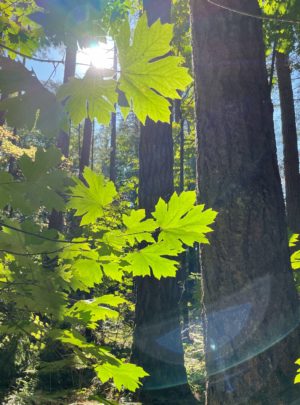 Over one-third of Colorado is forested acreage — 24 million acres of the state’s 66.48 million acres — managed by a variety of local, state and federal entities. The Colorado State Forest Service and the Colorado Forest Restoration Institute, both part of Colorado State University, launched a new online tool to better track completed forest management activities in the state. The
Over one-third of Colorado is forested acreage — 24 million acres of the state’s 66.48 million acres — managed by a variety of local, state and federal entities. The Colorado State Forest Service and the Colorado Forest Restoration Institute, both part of Colorado State University, launched a new online tool to better track completed forest management activities in the state. The 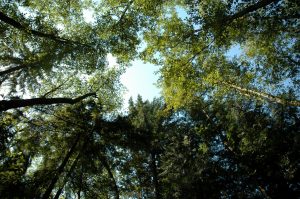 A tree-sit protest, which has blocked logging access to state Department of Natural Resources parcels, is now two weeks old. An injunction hearing regarding the parcels has been scheduled for 9 a.m. Friday in Clallam County Superior Court. If a 90-day injunction is issued, the tree climber will remove themselves from the tree. If the decision is not in favor of the environmentalists, the climber likely will stay up there indefinitely. “It’s going to be crunch time,” activist Peter Stedman said. The tree sit began about 5:30 a.m. May 7, when an unidentified professional tree climber attached themselves to a dunk tank platform 50 to 100 feet up in a tree. That platform was then attached to debris piled in the middle of a logging road. If the Department of Natural Resources (DNR) attempts to remove the debris to gain access to those parcels, the tree climber’s platform will drop.
A tree-sit protest, which has blocked logging access to state Department of Natural Resources parcels, is now two weeks old. An injunction hearing regarding the parcels has been scheduled for 9 a.m. Friday in Clallam County Superior Court. If a 90-day injunction is issued, the tree climber will remove themselves from the tree. If the decision is not in favor of the environmentalists, the climber likely will stay up there indefinitely. “It’s going to be crunch time,” activist Peter Stedman said. The tree sit began about 5:30 a.m. May 7, when an unidentified professional tree climber attached themselves to a dunk tank platform 50 to 100 feet up in a tree. That platform was then attached to debris piled in the middle of a logging road. If the Department of Natural Resources (DNR) attempts to remove the debris to gain access to those parcels, the tree climber’s platform will drop.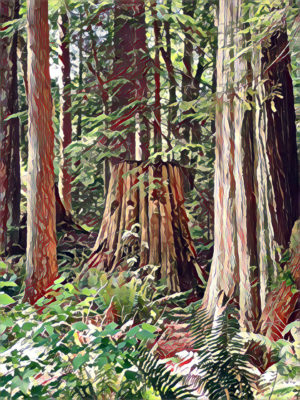 Industrial-scale logging in the Tongass National Forest was due to monopolies created by the federal government and taxpayer subsidies… A study by the Southeast Conservation Council calculated the federal government spent $386 million for preparation and sale of Tongass timber while collecting only $32 million in stumpage fees from 1982 to 1988. While the heyday of the timber industry supported about 4,000 jobs, many were nonresidents or recent arrivals who left when the pulp mills closed. Most of my former colleagues at the Sitka mill went “back home” to Washington when the mill ceased operation. The pulp mills closed primarily because of tree farms in warmer climates such as South Africa, where forests grow much faster than the Tongass. Many fruit and vegetable farms in the southern U.S. converted to tree farms… So, are there enough standing old-growth trees to support a vibrant timber industry in the Tongass? It depends upon who you ask.
Industrial-scale logging in the Tongass National Forest was due to monopolies created by the federal government and taxpayer subsidies… A study by the Southeast Conservation Council calculated the federal government spent $386 million for preparation and sale of Tongass timber while collecting only $32 million in stumpage fees from 1982 to 1988. While the heyday of the timber industry supported about 4,000 jobs, many were nonresidents or recent arrivals who left when the pulp mills closed. Most of my former colleagues at the Sitka mill went “back home” to Washington when the mill ceased operation. The pulp mills closed primarily because of tree farms in warmer climates such as South Africa, where forests grow much faster than the Tongass. Many fruit and vegetable farms in the southern U.S. converted to tree farms… So, are there enough standing old-growth trees to support a vibrant timber industry in the Tongass? It depends upon who you ask.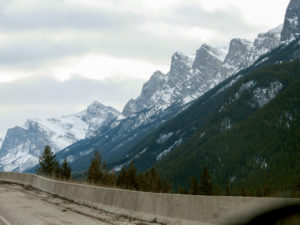 Taking aim at “climate ideologies antithetical to the American way of life,” President Donald Trump’s
Taking aim at “climate ideologies antithetical to the American way of life,” President Donald Trump’s 
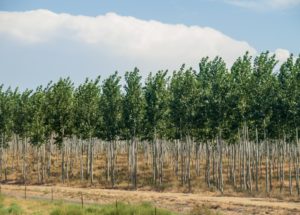 Agriculture and Forestry Minister Todd McClay has confirmed that restrictions on full farm-to-forest conversions on LUC 1-6 farmland will be in place this year, and reaffirmed that they will take effect from 4 December 2024 – the date of the original announcement. Enabling legislation will be introduced to Parliament during Q2 of this year. “The Government is focused on maintaining strong food and fibre production while supporting sustainable land use. We remain concerned about the effect that farm conversions are having on highly productive land — particularly sheep and beef farms in Northland, the East Coast and parts of Otago and Southland,” Mr McClay says. The new rules, now progressing through Cabinet, will ensure balance and recognise the value of both forestry and farming, while providing certainty for our food producers.
Agriculture and Forestry Minister Todd McClay has confirmed that restrictions on full farm-to-forest conversions on LUC 1-6 farmland will be in place this year, and reaffirmed that they will take effect from 4 December 2024 – the date of the original announcement. Enabling legislation will be introduced to Parliament during Q2 of this year. “The Government is focused on maintaining strong food and fibre production while supporting sustainable land use. We remain concerned about the effect that farm conversions are having on highly productive land — particularly sheep and beef farms in Northland, the East Coast and parts of Otago and Southland,” Mr McClay says. The new rules, now progressing through Cabinet, will ensure balance and recognise the value of both forestry and farming, while providing certainty for our food producers.
 The Sustainable Biomass Program (SBP) has today announced the publication of two Interim Regional Risk Assessments (RRAs), covering British Columbia and Alberta Forests, Canada (available
The Sustainable Biomass Program (SBP) has today announced the publication of two Interim Regional Risk Assessments (RRAs), covering British Columbia and Alberta Forests, Canada (available 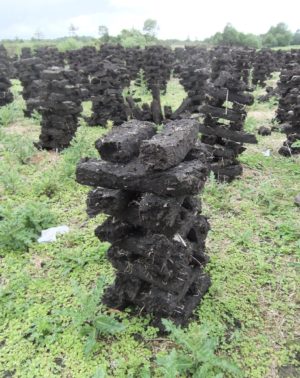 A love of the outdoors and a deep desire to make a meaningful impact on communities affected by climate change keeps Greg Verkaik going back to Western Canada. The PhD student studies peatlands and their role in wildfires. Climate change isn’t an abstract concept in his research, it’s something he’s been seeing and experiencing in the landscapes he’s visited since 2018 as part of this work. The 2025 wildfire season is already shaping up to be another intense year for Canada. Early signs point to another active and dangerous season, particularly in Western Canada. As peatlands dry and fire seasons lengthen, the risk of deep-burning, smouldering fires – the kind that can persist underground and reignite months later, continues to grow. This only strengthens Verkaik’s commitment to his research, which aims to better understand how peatlands influence wildfire behaviour and how they might be managed to reduce risk.
A love of the outdoors and a deep desire to make a meaningful impact on communities affected by climate change keeps Greg Verkaik going back to Western Canada. The PhD student studies peatlands and their role in wildfires. Climate change isn’t an abstract concept in his research, it’s something he’s been seeing and experiencing in the landscapes he’s visited since 2018 as part of this work. The 2025 wildfire season is already shaping up to be another intense year for Canada. Early signs point to another active and dangerous season, particularly in Western Canada. As peatlands dry and fire seasons lengthen, the risk of deep-burning, smouldering fires – the kind that can persist underground and reignite months later, continues to grow. This only strengthens Verkaik’s commitment to his research, which aims to better understand how peatlands influence wildfire behaviour and how they might be managed to reduce risk.
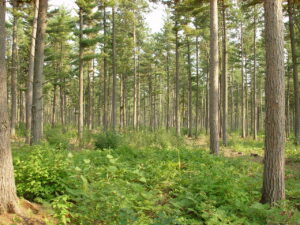 Earlier this week, Clean Air Task Force (CATF), alongside a team of leading U.S. forest carbon scientists, published a deep dive into the rules that govern a wide range of forest carbon credit certifications relevant to North America. The assessment examines rules of the road for quantifying carbon credits and identifies what works well, where there are weaknesses, and opportunities for improvements to ensure that forest carbon credits achieve their promised climate benefits… CATF’s assessment scored some elements of California’s current forest protocol that lays out the requirements for carbon credit certification as robust, such as the 100-year monitoring period for stored carbon in forests, and others as weak, like the risk assessment procedure. While high-quality credits are possible under the current protocol, the bar needs to be raised to guarantee that credits are delivering on their promise.
Earlier this week, Clean Air Task Force (CATF), alongside a team of leading U.S. forest carbon scientists, published a deep dive into the rules that govern a wide range of forest carbon credit certifications relevant to North America. The assessment examines rules of the road for quantifying carbon credits and identifies what works well, where there are weaknesses, and opportunities for improvements to ensure that forest carbon credits achieve their promised climate benefits… CATF’s assessment scored some elements of California’s current forest protocol that lays out the requirements for carbon credit certification as robust, such as the 100-year monitoring period for stored carbon in forests, and others as weak, like the risk assessment procedure. While high-quality credits are possible under the current protocol, the bar needs to be raised to guarantee that credits are delivering on their promise.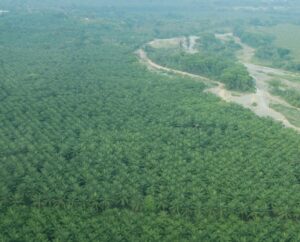 When I hear discussions about creating markets to “save nature,” a part of me is hopeful, but a bigger part is deeply cautious. Looking at how these market ideas have played out, like carbon markets, gives me pause. Forests, wetlands, and the natural world are not simple spreadsheets; treating them as such can lead us down a perilous path… Carbon, as CO2, is a global pollutant. A tonne reduced in one place has, theoretically, the same atmospheric impact as a tonne reduced elsewhere.This (imperfect) fungibility is what would allow a global carbon market to function. Biodiversity, however, is the epitome of diversity, local and unique. The specific mix of species, the genetic diversity and the intricate ecological relationships that define a patch of old-growth rainforest in the Amazon are utterly different from those in a Scottish pine forest or an Indonesian mangrove. You cannot swap one for the other and claim equivalence.
When I hear discussions about creating markets to “save nature,” a part of me is hopeful, but a bigger part is deeply cautious. Looking at how these market ideas have played out, like carbon markets, gives me pause. Forests, wetlands, and the natural world are not simple spreadsheets; treating them as such can lead us down a perilous path… Carbon, as CO2, is a global pollutant. A tonne reduced in one place has, theoretically, the same atmospheric impact as a tonne reduced elsewhere.This (imperfect) fungibility is what would allow a global carbon market to function. Biodiversity, however, is the epitome of diversity, local and unique. The specific mix of species, the genetic diversity and the intricate ecological relationships that define a patch of old-growth rainforest in the Amazon are utterly different from those in a Scottish pine forest or an Indonesian mangrove. You cannot swap one for the other and claim equivalence.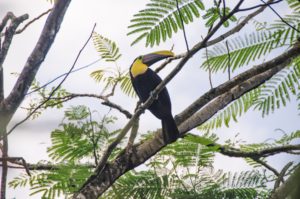 The Amazon rainforest may be able to survive long-term drought caused by climate change, but adjusting to a drier, warmer world would exact a heavy toll, according to new research in which Cardiff University played a role. The findings show adapting to the effects of climate change could see some parts of the Amazon rainforest lose many of its largest trees, releasing carbon stored in them to the air, and reducing the rainforest’s carbon sink capacity. Parts of the Amazon are expected to become drier and warmer as the climate changes, but long-term effects on the region’s rainforests – which span more than 2 million square miles – are poorly understood. Previous research has raised concerns that a combination of severe warming and drying, together with deforestation, could lead to lush rainforest degrading to a sparser forest or even savanna.
The Amazon rainforest may be able to survive long-term drought caused by climate change, but adjusting to a drier, warmer world would exact a heavy toll, according to new research in which Cardiff University played a role. The findings show adapting to the effects of climate change could see some parts of the Amazon rainforest lose many of its largest trees, releasing carbon stored in them to the air, and reducing the rainforest’s carbon sink capacity. Parts of the Amazon are expected to become drier and warmer as the climate changes, but long-term effects on the region’s rainforests – which span more than 2 million square miles – are poorly understood. Previous research has raised concerns that a combination of severe warming and drying, together with deforestation, could lead to lush rainforest degrading to a sparser forest or even savanna.
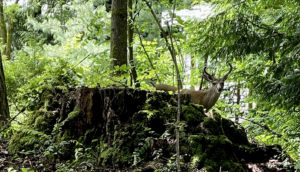 The United Nations Forum on Forests commenced its twentieth session today, as speakers spotlighted the connection between healthy forests and a sustainable future, the increasing threats to this important global resource and the subsequent need to invest in its protection despite a shrinking fiscal space. The Forum will hold its twentieth session from 5 to 9 May in New York. Established in 2000 by the Economic and Social Council, the Forum has universal membership and is tasked with reviewing progress in the implementation of sustainable forest management. This session — a technical one — will focus on Global Forest Goals 1 (reversing forest loss), 3 (protecting forests and using sustainable forest products) and 5 (promoting inclusive forest governance). “This Forum is unique,” observed Ismail Belen (Türkiye), Chair of the Forum’s twentieth session — noting that “it is the only global intergovernmental platform with universal membership that focuses on all forest-related issues”.
The United Nations Forum on Forests commenced its twentieth session today, as speakers spotlighted the connection between healthy forests and a sustainable future, the increasing threats to this important global resource and the subsequent need to invest in its protection despite a shrinking fiscal space. The Forum will hold its twentieth session from 5 to 9 May in New York. Established in 2000 by the Economic and Social Council, the Forum has universal membership and is tasked with reviewing progress in the implementation of sustainable forest management. This session — a technical one — will focus on Global Forest Goals 1 (reversing forest loss), 3 (protecting forests and using sustainable forest products) and 5 (promoting inclusive forest governance). “This Forum is unique,” observed Ismail Belen (Türkiye), Chair of the Forum’s twentieth session — noting that “it is the only global intergovernmental platform with universal membership that focuses on all forest-related issues”.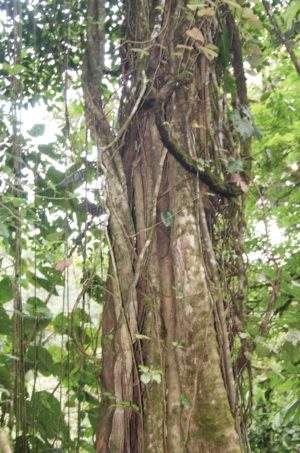 After almost a decade of negotiations, the agreements on carbon markets achieved at Cop29 have been broadly seen as a great success. As well as providing the basis for a global trading system, it may also unlock another source of green finance for global south countries. In Baku, important decisions on article 6 of the Paris Agreement were made and adopted. Countries have agreed on the ground framework to implement a global, centrally governed carbon market, widely seen as the successor to the clean development mechanism developed under the Kyoto protocol. There were also agreements on helping to refine the mechanisms allowing carbon trading between countries through voluntary cooperation… Given the uncertainty, carbon markets may provide an alternative vehicle to channel the funding necessary for climate adaptation and mitigation.
After almost a decade of negotiations, the agreements on carbon markets achieved at Cop29 have been broadly seen as a great success. As well as providing the basis for a global trading system, it may also unlock another source of green finance for global south countries. In Baku, important decisions on article 6 of the Paris Agreement were made and adopted. Countries have agreed on the ground framework to implement a global, centrally governed carbon market, widely seen as the successor to the clean development mechanism developed under the Kyoto protocol. There were also agreements on helping to refine the mechanisms allowing carbon trading between countries through voluntary cooperation… Given the uncertainty, carbon markets may provide an alternative vehicle to channel the funding necessary for climate adaptation and mitigation.